Chapter.04/07
The Impact of Data on Our World
The Impact of Data on Our World
Chapter 04/07
The Impact of Data on Our World
Snapshot
Learn how big data affects us every day by informing and improving our lives. Explore the benefits and challenges created by big data across a range of areas, including business, health, schooling and public safety.
Key Terms:
- Sensor
- Internet of things
- Data fusion
- Natural language processing
- Orthogonal data
Big data plays a significant role in modern society, affecting our daily experiences and habits in ways most of us don’t even think about.
Big data analytics takes the small pieces of each individual life and fits them into the bigger puzzle of our shared reality.
That puzzle reveals a broader picture—what we search for, where we go, how diseases spread—that benefits all of us. Big data has made our lives the easiest in the history of humankind.
The thermostat in your house learns your temperature preferences so you don’t get too chilly during the day or overheat when you’re trying to sleep. Companies analyze your shopping habits and show you ads relevant to your interests. Data within complex organizations, such health care systems and universities, exposes patterns that guide decision-making.

The gathering of all this information tends to generate a low-grade paranoia, as often happens with newly emerging technologies. People wonder how exactly the information will be used, who has access to it and what happens if it falls into the wrong hands. By and large, however, the benefits outweigh the risks, keeping us safer and healthier and giving us unparalleled access to information. Let’s take a closer look.
Big Data and You
When you woke up this morning, what’s the first thing you checked on your phone? The weather? Traffic? A social media platform? When you did this, you weren’t just checking the weather; you were accessing real-time data and using it to make decisions. You may not realize it, but you’re a data analyst.
Interactive: Big Data’s Reach
Loading...
-

It all starts with one data point.
Maybe you’re lost, looking for a new lunch-spot, or want to see how long it will take you to get work, your phone just needs one piece of data to start.
-
How smart is your smartphone?
Every time you use your phone, you’re creating a ton of data thanks to a team of tiny, complicated sensors.
-

Big data is busting traffic jams.
With more cars on the road than ever before, planners and engineers can rely on your data to monitor and alleviate congestion.
-
Big data is a healthier community.
With so much data that is location-specific, researchers are able to understand health hazards in real-time.
-

The sky is not the limit.
When we don’t need to rely on expensive data collection and storage methods, scientific advancement can happen at a faster rate.
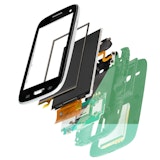
Here’s how it works: Tiny sensors built into your smartphone provide it with all kinds of information, like when to dim the screen as you hold the phone up to your ear and how to rotate images based on how you’re holding the phone. Those sensors also pick up on your motion, telling Snapchat to add a car around your Bitmoji when you’re driving or tracking your steps during the day.
Those sensor readings also communicate beyond your phone, feeding a larger data pool of information gathered from other smartphones. This crowdsourced data supplies the real-time stream that enables Google Maps to determine how fast traffic is moving. When you see that red stretch of highway on the map, you know you’d better find an alternate route to avoid the congestion.
Correct!
Incorrect
Companies Leading Big DataAn estimated 30 million networked sensor nodes inform the transportation, automotive, industrial, utilities and retail sectors.
Data also comes from a variety of sensors all around us. These electronic devices detect changes in the environment, including light and motion. An estimated 30 million networked sensor nodes inform the transportation, automotive, industrial, utilities and retail sectors. view citation[1] Similar to the root systems of trees, these networks communicate with each other. They monitor corrosion in bridges and tunnels, analyze water quality in reservoirs and track air pollutants in cities.
Sensors exist in our homes, too, from security cameras and voice assistants to smart fridges and thermostats. A wide variety of devices beyond our phones and computers interact and exchange data constantly over Wi-Fi. Scientists call this network of devices the internet of things (IoT). Their electronic communication enables us to run our homes efficiently, saving time, energy and money.

Considering all the sensors in homes, businesses and public spaces, we’re connected virtually every minute of the day. Software developers have to walk a fine line to make these open networks accommodate a range of devices while remaining as secure as possible.
Researchers predict that the number of internet-connected sensors will reach 1 trillion by 2030, making IoT the most important source of big data.
We’re just getting started using sensors to monitor and control our world. Researchers predict that the number of internet-connected sensors will reach 1 trillion by 2030, making IoT the most important source of big data. view citation[2] Just imagine what your daily life—and the advanced devices in it—will look like then.

Business and Big Data
Have you ever scrolled through Instagram and seen an ad for something you just Googled, or heard a new song on Spotify by an artist playing a show in your city? Those are just a couple of the ways companies use the data you transmit to tailor offerings specifically to you.
Beyond targeted ads, data enables businesses to get a better feel for their actual and potential customers in a given area. Data reveals residents’ race, age, gender and even income and education levels. This helps service providers and retailers decide whether they could make an impact in a specific town or region. Some people find it creepy for computers to know this much about them; others appreciate the convenience of personalized recommendations.
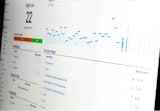
Beyond targeted ads, data enables businesses to get a better feel for their actual and potential customers in a given area.
Businesses, of course, want to expand their bottom line and meet their goals. Big data provides a constant feedback loop: What are consumers searching for? How do they work their way through the site? What do they place in their digital shopping carts, and which of those items do they go on to actually buy?
These details help business leaders better understand their consumers’ needs and wants so they can more effectively influence consumer behavior. Before the internet, retailers knew little more about you than a record of your past purchases. Now businesses can analyze search terms that lead consumers to their site, track which ads people click and which ones they scroll past, and monitor how consumers use their apps.
Amazon mines data from its 310 million consumer accounts to make product recommendations tailored to their searches within the site.
Online retailer Amazon mines data from its 310 million consumer accounts to make product recommendations tailored to their searches within the site. view citation[3] They use data to keep track of 1.5 billion items stocked in 200 fulfillment centers around the world, view citation[4] and they meet people’s real-time needs with convenient offers. When you ask Amazon Echo to add laundry detergent to your shopping list, the device may offer to place an order with Amazon for the brand you prefer.

Big data analytics also gives business managers new insights into their consumer behavior in the form of “orthogonal” data—new information from sources that aren’t related to existing data sets. For example, insurance companies can access data from sensors embedded in cars and smartphones to gain insights into a driver’s actual driving behaviors and patterns. view citation[5] They can then choose to reward good drivers with discounts and offer educational information to high-risk drivers.
Behind the scenes, big data also offers protection by helping companies identify and stop the fraudulent use of patents and trademarks. view citation[6] Business leaders can use big data to make smarter decisions about job market trends, hire better employees and offer more effective training.
Consumers interact with big data in the form of advertising and websites, but it influences business decisions across the board. Whether the business itself is big or small, big data relevant to that company exists. It’s up to company leaders to figure out how to make it work for them.

Public Safety and Big Data
Big data goes well beyond big business. From local police departments to airport security, the agencies responsible for keeping us safe are discovering new ways to use data to help them do that. In fact, the U.S. government is actively working with universities across the country to tap the hidden power of big data to thwart terrorists and stop the illegal spread of nuclear weapons.
The National Nuclear Security Administration uses a technique called data fusion to extract useful information from multiple data streams. For example, analysts might combine seemingly unrelated information from mobile radiation detectors with theft reports or purchase records for certain materials to warn them that a terrorist is working to develop a dirty bomb.
The U.S. government is actively working with universities across the country to tap the hidden power of big data to thwart terrorists and stop the illegal spread of nuclear weapons.
In airports, automated surveillance systems harness the power of deep learning networks to scan thousands of faces an hour. The networks use that face-scanning technology to pick out potential terrorists or people on no-fly lists.
The use of big data surveillance at local levels has grown dramatically in recent years, view citation[7] fueled by federal grants to increase law enforcement’s use of technology. A 30-month study of the Los Angeles Police Department found that its use of big data analytics had transformed police work in the city, enabling officers to focus on predicting and preventing crimes, not simply investigating them. view citation[8] For example, if a camera catches sight of a suspected bank robber driving in the vicinity of a bank, it sends an alert to police in the area via smartphone.
The role of big data in crime prevention
Learn More
Big data also makes it possible to breathe new life into cold cases. Police in California revived a 30-year-old murder investigation—the Golden State Killer case—by using DNA evidence from a genealogy site. The site hosts a database of millions of people tracing their family connections, and police used the information to arrest a suspect linked to a dozen murders and more than 50 rapes. view citation[9]
Despite the benefits of surveillance, there is a downside to its widespread use. As police track known and suspected criminals, they may also be monitoring innocent people. In 2016, the city of Baltimore used security cameras in airplanes to record outdoor activity across the city, effectively documenting everything visible from an altitude of more than 8,000 feet. view citation[10] In Los Angeles, being involved in a minor traffic accident with a gang member could get you added to the LAPD’s database. The next time your license plate pops up on a surveillance camera, police may receive an alert about you. view citation[11]
Law enforcement’s use of big data raises big questions, including the age-old philosophical quandary: Which is more important—the public’s safety or an individual’s privacy? Both hold great value.

Big Data and Your Health
Your doctor’s office is no exception to the trail of digital data. Health systems store digital records of your medical tests, vital-sign readings and diagnostic scans. They log the drugs you take, which medical procedures you undergo and how well you respond to treatment.
And that’s a good thing. Medical information is complex, and the more it’s documented, the better, especially to ensure you get efficient care tailored to your medical needs.
However, safeguarding all that personal data poses a challenge for health care providers. In 2015 alone, health care providers reported more than 250 data breaches targeting more than 113 million patient records. view citation[12] A White House report has called for more education and training in data security to fight the problem. view citation[13]
In 2015 alone, health care providers reported more than 250 data breaches targeting more than 113 million patient records.
Managing so much data takes a lot of effort. Researchers estimate that the Kaiser Permanente health system in California, which has 9 million health plan participants, manages more than 26 petabytes (1 petabyte = 1 million gigabytes) of data. view citation[14] That’s enough to fill 40 million CD-ROMs.
Like learning another language, health care providers first have to interpret the data in order to optimize its use. They use data in part to develop artificial intelligence and predictive algorithms that improve patient care. Additionally, Kaiser has developed a data management system to track and predict the spread of infections, which account for more than 700,000 unnecessary illnesses and 75,000 in-hospital deaths annually. view citation[15] Lowering those numbers means fewer hospitalizations and healthier communities.
Across the country from Kaiser Permanente, North Carolina’s UNC Health Care System uses natural language processing—the use of artificial intelligence to interpret information found in natural human languages, such as English—to analyze large quantities of unstructured data in patient medical records. view citation[16] The information enables providers to predict whether patients are at risk for complications, with the goal of offering better care and reducing readmission rates.
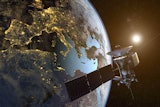
The benefits of big data go beyond hospital walls. In the broader community, analytics help public health officials monitor and respond to epidemics and potential health threats. One online tool created by U.S. and Canadian scientists analyzes publicly available data to track the spread of antibiotic-resistant superbugs in a city or region. view citation[17] Scientists also use social media to predict how illnesses will spread during seasonal flare-ups, such as the flu in winter. view citation[18]
When the public is armed with that information, you can make informed decisions based on your risk. Has a certain neighborhood seen a spike in illnesses? You may opt to change your dinner reservation to a GrubHub delivery.

Big Data on Campus
Even if you graduated years ago, schools still have much to teach us about how to make the most of big data. Classrooms have evolved greatly since the days of chalkboards and textbooks. Big data now drives personalized learning in today’s schools—from kindergarten through college—by helping teachers tailor lessons to students’ strengths.
Experts at the educational courseware company Pearson say our educational system is on the brink of even bigger changes, thanks in part to technologies that capture students’ interactions with digital learning devices, including tablets and smartphones. view citation[19]
Georgia State University is one university leading the way. In 2011, the university set out to improve its student retention and graduation rates by partnering with a data analytics company. view citation[20] First, they built a Graduation and Progression System that gives advisers real-time analyses of academic progress and the implications of certain decisions for each student. Then they used 10 years of data on every student, grade and course at the university to create a model for predicting student success. The system works by checking more than 800 variables for each student to identify those who may be headed for trouble. view citation[21]
The massive effort has paid off. The university’s minority, low-income and first-generation students now graduate at the same rate as the student body overall, and the time it takes students to graduate has fallen by half a semester on average.
Other schools are using big data analytics in all areas of education: tracking research productivity, boosting donor giving, matching students with peer mentors and managing their institutional reputations across social media.
A Whole New World of Big Data
Whether you embrace technology in your own life or dream of hiding away off the grid, big data is here to stay. It’s transforming our world and revealing things about us we’ve never seen before. The responsibility of using that information wisely rests with all of us as we find our footing in this new age of instant information. Whether in our personal lives or for the public good, big data promises to save us time, money and energy. We just have to know how to interpret it—and how to act on those interpretations—for our collective benefit.
Correct!
Incorrect
Privacy, Security, & LiabilityReferences
-
“Big data: The next frontier for innovation, competition, and productivity.” McKinsey Digital. May 2013. View Source
-
“The Trillion Sensor Movement.” FuturistSpeaker.com. View Source
-
“How Many Products Does Amazon Sell Worldwide.” ScrapeHero. January 2018. View Source
-
“Amazon Global Fulfillment Center Network.” MWPVL International. June 2019. View Source
-
“5 Ways Telematics is Changing Everything We Do.” FLEETTRAX. View Source
-
“Intellectual property protection: 10 tips to keep IP safe.” CSO. February 2019. View Source
-
“A rare look inside LAPD’s use of data.” CNN. September 2017. View Source
-
“A rare look inside LAPD’s use of data.” CNN. September 2017. View Source
-
“How a Genealogy Website Led to the Alleged Golden State Killer.” The Atlantic. April 2018. View Source
-
“Secret Cameras Record Baltimore’s Every Move From Above.” Bloomberg Businessweek. August 2016. View Source
-
“A rare look inside LAPD’s use of data.” CNN. September 2017. View Source
-
“Data Breaches In Healthcare Totaled Over 112 Million Records In 2015.” Forbes. December 2015. View Source
-
“The National Cyber Strategy of the United States.” The White House. September 2018. View Source
-
“Big Healthcare Data: Preserving Security and Privacy.” Journal of Big Data. December 2018. View Source
-
“Taking Predictive Analytics to the Next Level.” Center for Total Health, Kaiser Permanente. View Source
-
“How UNC Health Care Uses Natural Language Processing to Reduce Readmissions.” Becker’s Health IT and CIO Report. November 2013. View Source
-
“How Big Data Is Being Used to Fight Infectious Disease Threats.” insideBIGDATA. December 2016. View Source
-
“How Big Data Is Being Used to Fight Infectious Disease Threats.” insideBIGDATA. December 2016. View Source
-
“Digital Learning: Your best teacher’s assistant.” Pearson Education. 2017. View Source
-
“Building a Pathway to Student Success at Georgia State University.” Ithaka S+R. April 2015. View Source
-
“Data Dive.” Inside Higher Ed. July 2017. View Source
Next Section
Privacy, Security and Liability
Chapter 05 of 07
Learn about the interconnected layers of public and private responsibility that come with the use of big data.
